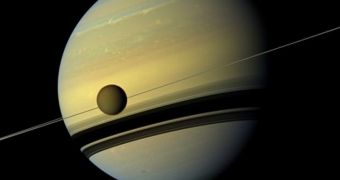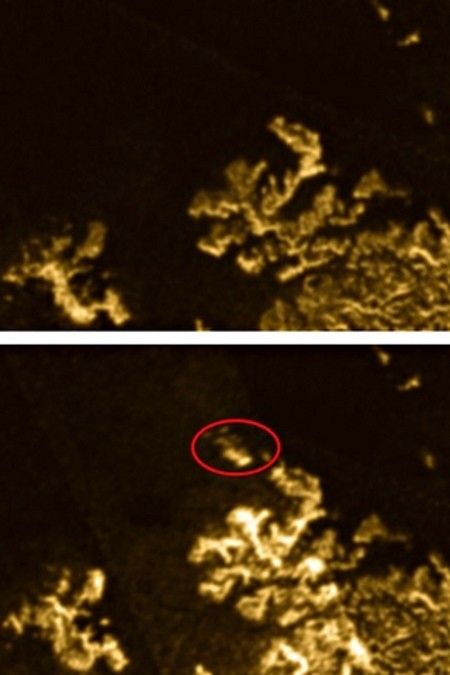This past June 22, scientists with Cornell University in the United States announced that, with the help of data provided by the Cassini-Huygens spacecraft, they had documented the presence of a so-called magic island on the surface of Titan.
In a paper in the journal Nature Geoscience, the researchers detail that Titan is one of Saturn's 62 moons. It is considerably smaller than our planet, but it is the largest of the moons Saturn has until now been documented to be accompanied by.
Previous investigations showed that, in terms of its makeup, Titan is quite similar to Earth. Specifically, it accommodates for several lakes and even seas, and evidence indicates that its appearance is constantly changing due to wind and rain.
Still, these bodies of liquid are hidden under a fairly thick atmosphere that is chiefly made up of methane and nitrogen, and liquid methane and ethane have been shown to have carved river-like channels on its surface.
Of the seas that are present on the surface of this moon, the second largest is known to the scientific community as Ligeia Mare. This body of liquid sits in Titan's north polar region, and it was on its surface that the magic island appeared.
As detailed in the journal Nature Geoscience, the peculiar geologic formation documented on the surface of Ligeia Mare with the help of the Cassini-Huygens spacecraft was a so-called transient feature. This means that it only stuck around for a few days.
More precisely, Cornell University scientists say that the mysterious object was not present in images obtained and sent down to Earth prior to July 2013, and that, having made an appearance, disappeared after a surprisingly short period of time.
Commenting on this discovery, Jason Hofgartner said, “This discovery tells us that the liquids in Titan's northern hemisphere are not simply stagnant and unchanging, but rather that changes do occur. We don’t know precisely what caused this 'magic island' to appear, but we'd like to study it further.”
Furthermore, “Likely, several different processes – such as wind, rain and tides – might affect the methane and ethane lakes on Titan. We want to see the similarities and differences from geological processes that occur here on Earth.”
By the looks of it, it is possible that the object, visible in the second of the images below, was an effect of rising bubbles. Then again, it might have been an iceberg that somehow came to break free from the shoreline, or just waves moving across Ligeia Mare.

 14 DAY TRIAL //
14 DAY TRIAL // 

